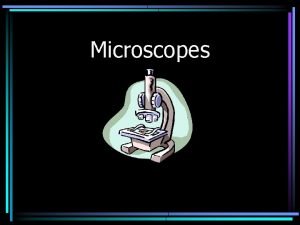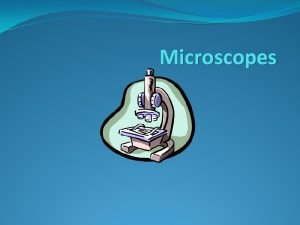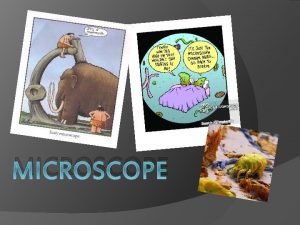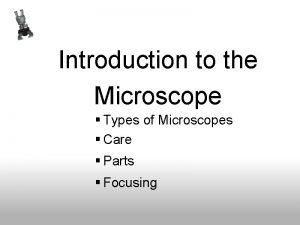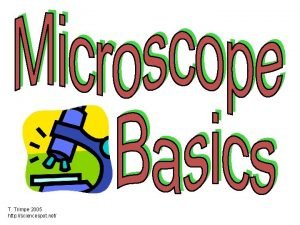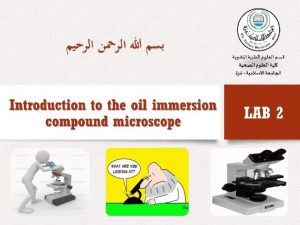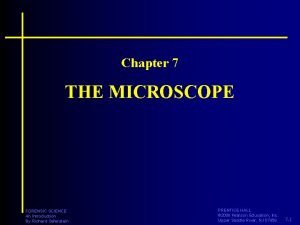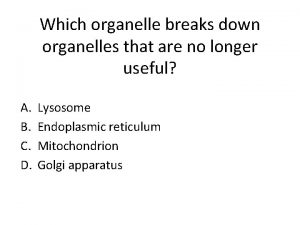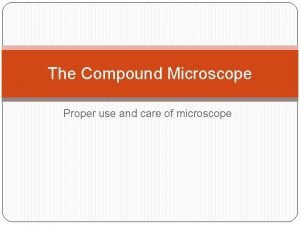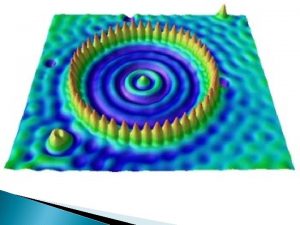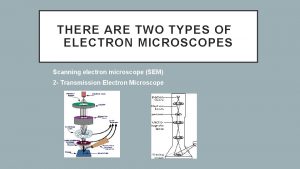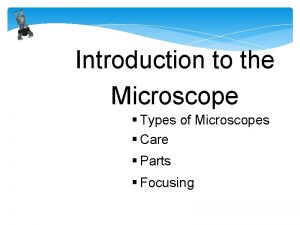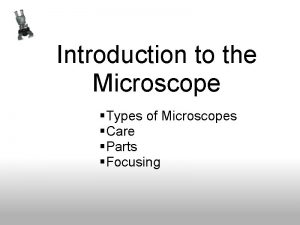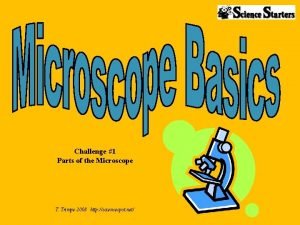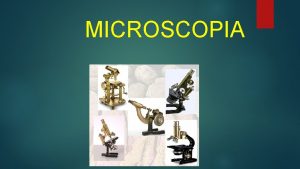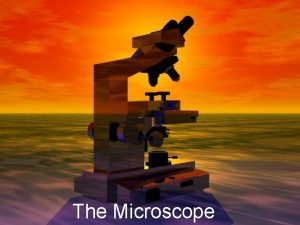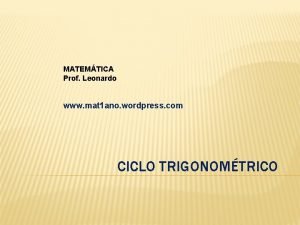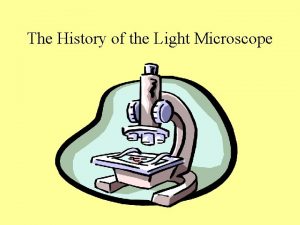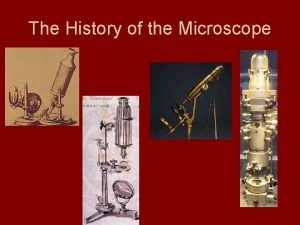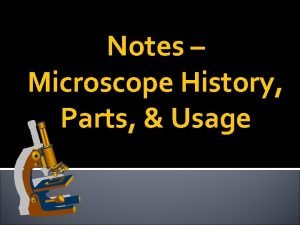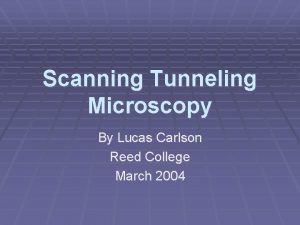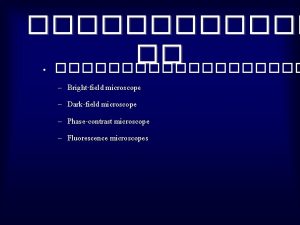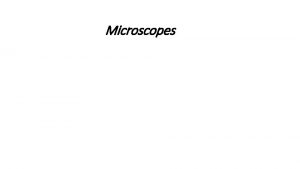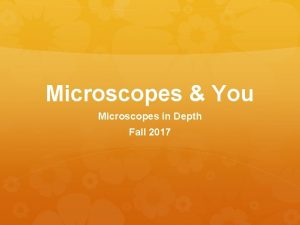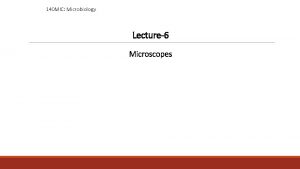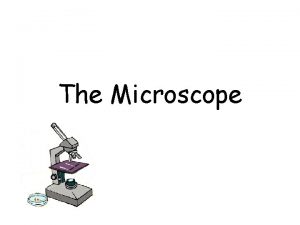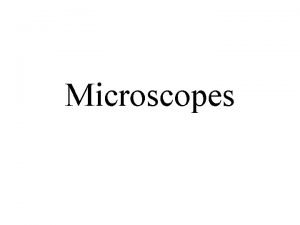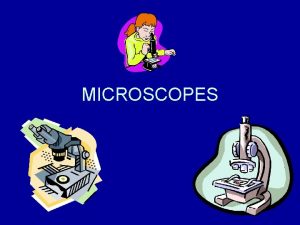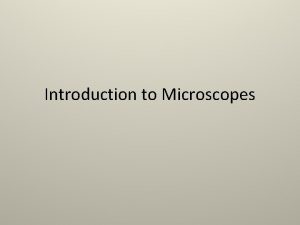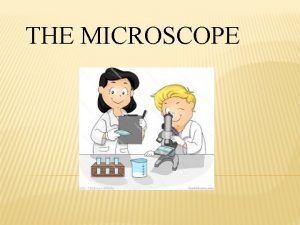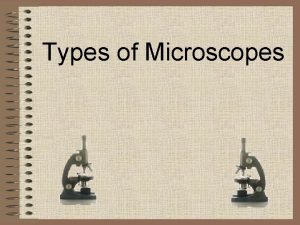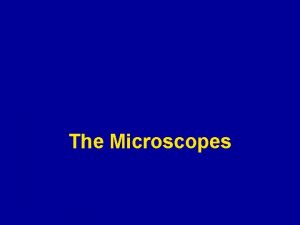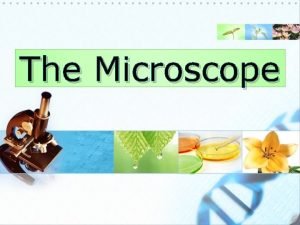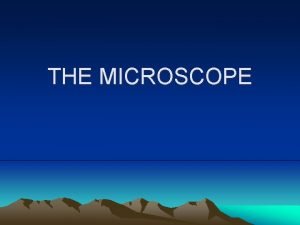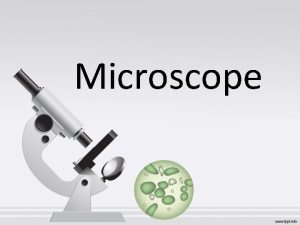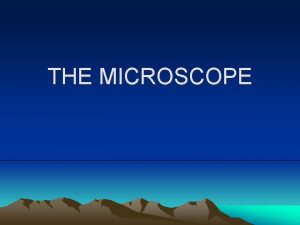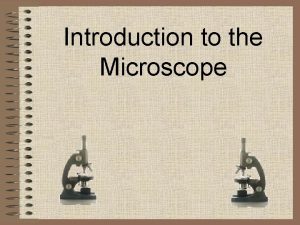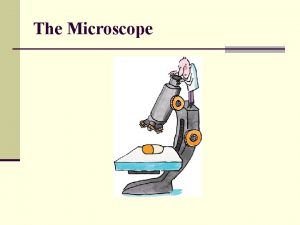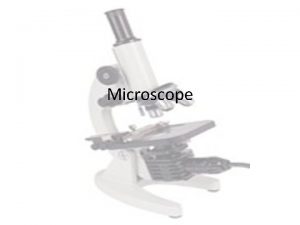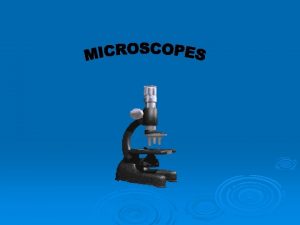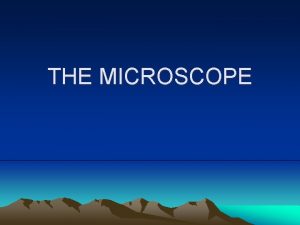Microscopes History of the Microscope 1590 Two Dutch



























- Slides: 27

Microscopes

History of the Microscope 1590 – Two Dutch eye glass makers, Zaccharias Janssen and son Hans Janssen experimented with multiple lenses placed in a tube. The Janssens observed that viewed objects in front of the tube appeared greatly enlarged, creating both the forerunner of the compound microscope and the telescope

History of the Microscope

History of the Microscope • 1655 – Robert Hooke used a compound microscope to observe pores in cork –He called them “cells”


History of the Microscope • Antoine van Leeuwenhoek st – 1 to see single-celled organisms in pond water

Microscope Vocabulary • Magnification: increase of an object’s apparent size • How to calculate Total magnification? • Resolution: power to show details clearly • Both are needed to see a clear image

Types of Microscopes • 1. Compound Light Microscope – 1 st type of microscope, most widely used –light passes through 2 lenses –Can magnify up to 2000 x


Types of Microscopes • 2. Electron Microscope –Used to observe VERY small objects: viruses, DNA, parts of cells –Uses beams of electrons rather than light –Much more powerful

Types of Microscopes • Transmission Electron Microscope (TEM) –Can magnify up to 250, 000 x –shoot electrons through the object



Types of Microscopes • Scanning Electron Microscope (SEM) –Can magnify up to 100, 000 x



The Cell Theory

Some Random Cell Facts • The average human being is composed of around 100 Trillion individual cells!!! • It would take as many as 50 cells to cover the area of a dot on the letter “i” WOW!!!

Discovery of Cells • 1665 - English Scientist, Robert Hooke, discovered cells while looking at a thin slice of cork. • He described the cells as tiny boxes or a honeycomb • He thought that cells only existed in plants and fungi

Anton van Leuwenhoek • 1673 - Used a handmade microscope to observe pond scum & discovered single-celled organisms • He called them “animalcules” • He also observed blood cells from fish, birds, frogs, dogs, and humans • Therefore, it was known that cells are found in animals as well as plants

150 -200 Year Gap? ? ? • Between the Hooke/Leuwenhoek discoveries and the mid 19 th century, very little cell advancements were made. • This is probably due to the widely accepted, traditional belief in Spontaneous Generation. • Examples: -Mice from dirty clothes/corn husks -Maggots from rotting meat

19 th Century Advancement • Much doubt existed around Spontaneous Generation • Conclusively disproved by Louis Pasteur: Ummm, I don’t think so!!! = + ?

Development of Cell Theory • 1838 - German Botanist, Matthias Schleiden, concluded that all plant parts are made of cells • 1839 - German physiologist, Theodor Schwann, who was a close friend of Schleiden, stated that all animal tissues are composed of cells.

Development of Cell Theory • 1858 - Rudolf Virchow, German physician, after extensive study of cellular pathology, concluded that cells must arise from preexisting cells.

The Cell Theory Complete • The 3 Basic Components of the Cell Theory were now complete: • 1. All organisms are composed of one or more cells. (Schleiden & Schwann)(1838 -39) • 2. The cell is the basic unit of life in all living things. (Schleiden & Schwann)(1838 -39) • 3. All cells are produced by the division of preexisting cells. (Virchow)(1858)

Modern Cell Theory • Modern Cell Theory contains 4 statements, in addition to the original Cell Theory: • The cell contains hereditary information(DNA) which is passed on from cell to cell during cell division. • All cells are basically the same in chemical composition and metabolic activities. • All basic chemical & physiological functions are carried out inside the cells. (movement, digestion, etc) • Cell activity depends on the activities of sub-cellular structures within the cell(organelles, nucleus, plasma membrane)

How Has The Cell Theory Been Used? • The basic discovered truths about cells, listed in the Cell Theory, are the basis for things such as: – Disease/Health/Medical Research and Cures(AIDS, Cancer, Vaccines, Cloning, Stem Cell Research, etc. )
 Microscope 1590
Microscope 1590 1590 microscope
1590 microscope 1590 microscope
1590 microscope Microscope 1590
Microscope 1590 Three types of microscope
Three types of microscope Microscopes brainpop quiz answers
Microscopes brainpop quiz answers Purpose of microscope
Purpose of microscope Forensic science microscopes
Forensic science microscopes Which organelle breaks down
Which organelle breaks down Uses of light microscopes
Uses of light microscopes Electron microscopes main idea
Electron microscopes main idea Types of electron microscope
Types of electron microscope Types of microscopes
Types of microscopes Different types of microscope and their uses
Different types of microscope and their uses Difference between light microscope and electron microscope
Difference between light microscope and electron microscope Microscope mania compound light microscope
Microscope mania compound light microscope Microscopio electronico limite de resolucion
Microscopio electronico limite de resolucion Hans & zacharias janssen
Hans & zacharias janssen Ps form 3977
Ps form 3977 Determine o quadrante de arco 1590
Determine o quadrante de arco 1590 History of light microscope
History of light microscope Where was salvino d'armate born
Where was salvino d'armate born History of the microscope
History of the microscope Scanning tunneling microscope history
Scanning tunneling microscope history Hình ảnh bộ gõ cơ thể búng tay
Hình ảnh bộ gõ cơ thể búng tay Bổ thể
Bổ thể Tỉ lệ cơ thể trẻ em
Tỉ lệ cơ thể trẻ em
